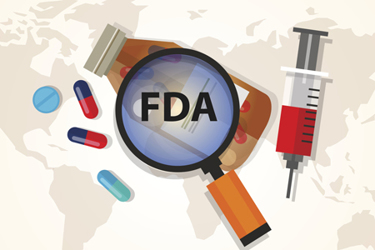The FDA Speaks Up For Quality Management: Must They Beg?
By Penelope Przekop, MSQA, RQAP-GCP

Representatives from the FDA and industry sponsors, vendors, professional organizations, patient advocates, and academic think tanks gathered at the U.S. Press Club in Washington, D.C. to discuss challenges and successes of integrating quality by design (QbD) and risk-based monitoring (RBM) into the design and conduct of clinical studies.
On Jan. 31, 2023, the FDA, in collaboration with the Duke-Margolis Institute for Health Policy, convened a public workshop, Building Quality into the Design and Conduct of Clinical Studies: Integrating Quality by Design (QbD) and Risk-Based Monitoring (RBM) Approaches, which included several esteemed speakers, including Janet Woodcock, FDA’s recently retired principal deputy commissioner, and four panel sessions.
The formal meeting objectives were to:
- encourage the incorporation of QbD principles into the design and conduct of clinical studies, including the development of study protocols and workflow processes;
- identify barriers to QbD and RBM implementation by sponsors, CROs, and clinical trial sites; and
- inform best practices for incorporating QbD and RBM approaches into the design and conduct of clinical studies.
As the workshop progressed, it became clear what the FDA has been scratching its collective head over:
Why is the industry resisting change that regulators so clearly support?
Must they beg? The FDA's messaging began in 2013 with their guidance on RBM. Eleven years, five total related key guidance documents (listed below), and one global pandemic later, why aren’t we moving forward at more than a snail’s pace?
- Oversight of Clinical Investigations – A Risk-Based Approach to Monitoring (2013)
- ICH E6(R2) Good Clinical Practice (2016)
- ICH E8(R1) General Considerations for Clinical Studies (2022)
- A Risk-Based Approach to Monitoring of Clinical Investigations Questions and Answers (2023)
- ICH E6(R3) Good Clinical Practice (draft, 2023)
Before we circle back to consider if the formal meeting objectives were met, here is a summary of the key questions, messages, discussion points, and themes of the day.
The Big Question: Why?
In response to the head-scratching FDA representatives present, speakers and panelists offered various facts, expert opinions, and data to communicate the following industry barriers to adoption of the key principles covered by the workshop:
- Industry does not understand the concepts and how to apply them. This has perpetuated a low perception of value.
- Industry is not aligned in its understanding and definition of risk as applied to these concepts.
- There is a pervasive overfocus on timelines and a deeply entrenched associated reward system.
The Next Question: How?
Human nature generally leads us to question how something can be fixed once we understand why it happened. Numerous how questions were posed to the audience by the speakers and panelists. The following questions were asked by the individuals noted on behalf of an industry they believe cannot answer. In fact, they know the answers, as does the FDA, and are trying to offer them, with a disappointing number of takers.
- “How can we (the industry) modernize the clinical trial enterprise?” – M. Knair El Zarrad, director of the office of medical policy, CDER
- “What is all this and how do we (the industry) operationalize it?” – Micheal Walega, head of centralized monitoring, Bristol Myers Squibb, and co-lead of the PHUSE Risk-Based Quality Management Working Group
- “How do we (the industry) close the execution gap?” – Michael Torok, vice president and global head of QA programs, Roche/Genentech
These seemingly overwhelming questions inevitably lead us full circle. We’ll get back to why later.
Solutions And Recommendations
As the day progressed, the slow industry adoption of the concepts and the overwhelming change management scenario dovetailed into various solutions and recommendations. Some were shoot-for-the-moon large and inspirational. Others were practical. Based on body language, many represented pieces of the puzzle that had strong audience support; others were met with deer-in-the-headlight faces. Several audience members asked questions and offered supportive comments.
The following is a partial list of what the industry needs according to the speakers and panelists:
- Critical to quality processes, process steps, documentation, and data must be properly identified.
- Thresholds for decisions and taking actions must be properly set. The industry must align on how risk is defined while ensuring the definition is aligned with regulators.
- Those responsible for identifying criticality and thresholds must have the knowledge to do it correctly.
- Awareness and understanding of these concepts must be driven cross-functionally so that each function knows how it applies to their work and the value it brings not only in the long run but to their function.
- Quality by design can improve diversity in clinical trials, which is another advantage; this needs to be explored and understood.
- The healthcare industry needs to also understand how these concepts can improve the quality of natural history data. Otherwise, those data sets will not provide the integrity and quality on which we wish to rely for new knowledge and decision-making.
- What is critical to quality must be specified in contractual agreements.
- Sponsors should be closely involved in the risk process.
- The overfocus on how risk is scored is slowing us down. The industry must better understand the underlying point, which is to get cross-functional experts together as early as possible to brainstorm what can go wrong and make decisions.
- 100% source data verification is no longer expected and is inefficient.
- Protocols need to be simplified. They have grown too complex and are often filled with data that are not critical to proving the primary hypothesis of the study. (Kenneth Getz, executive director, and a professor at the Tufts Center for the Study of Drug Development, Tufts University School of Medicine, shared that based on a study they conducted, data collected per protocol increased 283.2% between 2010 and 2020.)

Time To Stop “Scraping The Toast”
“Our system of make and inspect, which if applied to making toast, would be expressed, “You burn, I’ll scrape.” – W. Edwards Deming, as quoted by Joseph Sensenbrenner (from Deming’s Journey to Profound Knowledge: How Deming Helped Win a War, Altered the Face of Industry, and Holds the Key to Our Future by John Willis)
In 2005, McGraw-Hill published Six Sigma for Business Excellence. The book, which is still available from McGraw-Hill, was written nearly 25 years ago by a young pharma director finishing an MS in quality systems engineering. The book was based on her experience building Johnson & Johnson’s first global pharmacovigilance quality management function by applying the underlying concepts of quality management to non-manufacturing pharma processes.
In 2019, Life Science Leader published a two-part article, How Biopharma Leaders Can Ward Off A Perfect Storm, by the same writer. The article described the evolving pharma landscape and how the science of quality management could drive the progress and change required to proactively divert a perfect storm growing on the horizon.
On Jan. 31, 2024, the FDA didn’t need to tell me that the science of quality management is the answer. I heard the FDA joining my decades-long call to industry, one that I also have escalated in my own small way over the last several years. At the end of the day, the workshop met the goal of encouraging the incorporation of QbD principles into the design and conduct of clinical studies, including the development of study protocols and workflow processes. Some key barriers were identified, powerful supporting data was provided, and case studies were shared. We were informed of some best practices for incorporating QbD and RBM approaches into the design and conduct of clinical studies. The workshop was a fantastic next step, a great start, but far from enough to create the sea change needed. This brings us full circle again, asking why? Although it was a fantastic event, why is the Duke-Margolis/FDA effort not enough?
In his new book on Deming, John Willis asks readers to consider how U.S. workers managed to quickly adapt to converted facilities and new technologies while doubling, tripling, or quadrupling production and simultaneously increasing product quality during WWII.
Per Willis, “The answer lies with Deming and is largely considered the reasons the Allies won the war.” After the war, Soviet leader Joseph Stalin made a toast, “Without American production, the United Nations could never have won the war.” To achieve that incredible sea change, some 2,000 men and women from several hundred companies took part in what is known as the Stanford Courses. Many, in turn, became instructors and gave more classes to more companies. Over 31,000 engineers, supervisors, managers, and workers went through the course, taking the concepts of quality management back to their factories, manufacturing plants, and assembly lines all over the U.S. to create more and better weapons and supplies for the war effort. These people knew more than anyone how important timelines were. Yet, they made it happen.
A deep-rooted fundamental change is required again today, not only in pharma but across the healthcare industry described in Mike McGee’s 2019 book, Code Blue: Inside America's Medical Industrial Complex. Despite the growing understanding of quality control versus quality assurance, our industry is burning (developing products) and scraping (inspection readiness). My 2019 Life Science Leader article lays out many underlying answers to FDA’s question “why?” that were not addressed in the workshop.
What one man can do, another can do. – Anthony Hopkins in The Edge
Early in the workshop day, Fergus Sweeney, distinguished clinical trials expert (retired), relayed in his presentation that the greatest achievements will be by those who embrace new approaches and seek to make them work — there is no regulatory impediment per se. Later in the day, Micheal Torok said, “Leaders must give permission, and therefore courage, to those roles, who with best intentions, are holding on to the past.”
The storm is nearly overhead. Many consultants on the ground, moving through company after company, are moving within the looming shadow, one that the FDA is still largely shielded from by all the inspection readiness toast scraping. It’s time to escalate with stronger, more intensive solutions in the spirit of the Stanford Courses. The next step is to identify who is going to lead the charge and make it happen. What one generation can do, another can do. What one industry can do, another can do.
Raise your hand if interested.
About The Author:

Penelope Przekop is a corporate quality management expert. Throughout her 30+ year career, she has worked with numerous Fortune 100 pharma companies, including Pfizer, Merck, Lilly, and Glaxo Smith Kline, and held leadership positions at Novartis, Covance, Wyeth, and Johnson & Johnson. She is the founder and CEO of PDC Pharma Strategy, a firm that provides corporate compliance, quality assurance, and pharmacovigilance consulting and services. She is an author whose books include Six Sigma for Business Excellence (McGraw-Hill) and 5-Star Career: Define and Build Yours Using the Science of Quality Management (Productivity Press). Przekop earned a BS in biology from Louisiana State University and an MS in quality systems engineering from Kennesaw State University. She is a graduate of the Smith College Program for Women’s Leadership and the Rutgers University Senior Leadership Program for Professional Women.
